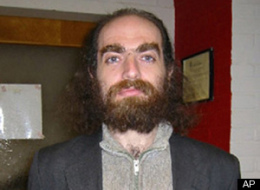
Dr Grigori Perelman, a reclusive Russian genius, is refusing to accept the prestigious $1 million "Millennium" mathematics prize awarded by the Clay Mathematics Institute in Cambridge, MA.
Perelman was awarded the prize for solving the one-hundred-year-old Poincaré conjecture, one of the most complicated mathematical problems in the world - so complex, in fact, that after Perelman posted his proofs in 2002 it took several years for other experts to confirm he was correct.
Now Perelman's refusal to accept the prize - the second prestigious prize he has refused - has led some to examine his unorthodox life and dub him "Mathsputin."
The 44-year-old Perelman currently resides with his mother and sister in his hometown of St. Petersberg, living extremely humbly. One neighbor told a Moscow newspaper, "He always wears the same tatty coat and trousers. He never cuts his nails or beard. When he walks he simply stares at the ground, rather than looking from side to side."
Another neighbor told of a time she had visited Perelman's apartment due to problems with cockroaches.
"I was once in his flat and I was astounded," she said. "He only has a table, a stool and a bed with a dirty mattress which was left by previous owners -- alcoholics who sold the flat to him."
After performing some teaching in American universities in 2003, Perelman has apparently given up on mathematics, dismayed at the intellectual and moral failings of his peers. Instead, according to reports, he likes to play table tennis against a wall in his apartment. "You are disturbing me. I am picking mushrooms," he told a journalist who managed to get in touch with him.
From Wolfram's Mathworld:
Poincaré Conjecture
In its original form, the Poincaré conjecture states that every simply connected closed three-manifold is homeomorphic to the three-sphere (in a topologist's sense) , where a three-sphere is simply a generalization of the usual sphere to one dimension higher. More colloquially, the conjecture says that the three-sphere is the only type of bounded three-dimensional space possible that contains no holes. This conjecture was first proposed in 1904 by H. Poincaré (Poincaré 1953, pp. 486 and 498), and subsequently generalized to the conjecture that every compact -manifold is homotopy-equivalent to the -sphere iff it is homeomorphic to the -sphere. The generalized statement reduces to the original conjecture for .The Poincaré conjecture has proved a thorny problem ever since it was first proposed, and its study has led not only to many false proofs, but also to a deepening in the understanding of the topology of manifolds (Milnor). One of the first incorrect proofs was due to Poincaré himself (1953, p. 370), stated four years prior to formulation of his conjecture, and to which Poincaré subsequently found a counterexample. In 1934, Whitehead (1962, pp. 21-50) proposed another incorrect proof, then discovered a counterexample (the Whitehead link) to his own theorem.
The case of the generalized conjecture is trivial, the case is classical (and was known to 19th century mathematicians), (the original conjecture) appears to have been proved by recent work by G. Perelman (although the proof has not yet been fully verified), was proved by Freedman (1982) (for which he was awarded the 1986 Fields medal), was demonstrated by Zeeman (1961), was established by Stallings (1962), and was shown by Smale in 1961 (although Smale subsequently extended his proof to include all ).
The Clay Mathematics Institute included the conjecture on its list of $1 million prize problems. In April 2002, M. J. Dunwoody produced a five-page paper that purports to prove the conjecture. However, Dunwoody's manuscript was quickly found to be fundamentally flawed (Weisstein 2002). A much more promising result has been reported by Perelman (2002, 2003; Robinson 2003). Perelman's work appears to establish a more general result known as the Thurston's geometrization conjecture, from which the Poincaré conjecture immediately follows (Weisstein 2003). Mathematicians familiar with Perelman's work describe it as well thought-out and expect that it will be difficult to locate any substantial mistakes (Robinson 2003, Collins 2004). In fact, Collins (2004) goes so far as to state, "everyone expects [that] Perelman's proof is correct."
Bagaimana Menarikkan Article Pada Hari Ini . BLUE.Jangan Lupa Datang Lagi Untuk Membaca Article Yang lebih Menarik Pada Masa Akan Datang/






Posting Komentar